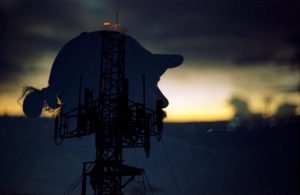
Starlink: Revolutionizing Global Connectivity with Satellite Internet
Starlink is a satellite internet constellation developed by SpaceX, aiming to provide high-speed, low-latency internet connectivity globally, especially in remote and underserved areas. The Starlink project was announced in 2015, and since then, it has been making rapid progress, with the first batch of satellites launched in 2019. As of now, Starlink has launched over 2,000 satellites into orbit, with plans to launch thousands more in the coming years.
The idea behind Starlink is to create a network of low-Earth orbit (LEO) satellites that can provide internet connectivity to any location on the planet. Each satellite is equipped with a high-gain antenna and a laser communication system, allowing it to communicate with other satellites and with ground stations. This constellation of satellites can provide internet speeds of up to 1 Gbps, with latency as low as 20 ms, making it comparable to fiber-optic internet.
How Starlink Works
Starlink uses a constellation of LEO satellites, which are orbiting the Earth at an altitude of around 550 km. Each satellite is equipped with a phased array antenna, which allows it to steer and shape its beam to connect with different users on the ground. The satellites communicate with each other using laser beams, creating a mesh network that allows data to be transmitted and received quickly and efficiently.
When a user wants to access the internet through Starlink, they need to install a small dish antenna at their location, which communicates with the nearest Starlink satellite. The satellite then connects the user to the internet, providing a high-speed and low-latency connection. The user’s data is transmitted to the satellite, which then forwards it to its destination, using the mesh network to route the data through other satellites if necessary.
Benefits and Applications of Starlink
Starlink has the potential to revolutionize the way we access the internet, especially in remote and underserved areas. Some of the benefits and applications of Starlink include:
Providing internet connectivity to rural and remote areas, where traditional internet infrastructure is lacking or non-existent. Enabling emergency responders and disaster relief teams to stay connected during disasters and emergencies. Supporting remote education and healthcare initiatives, by providing reliable and high-speed internet connectivity. Enhancing maritime and aviation communications, by providing a reliable and high-speed connection for ships and aircraft.
Challenges and Limitations of Starlink
While Starlink has the potential to revolutionize global connectivity, there are also some challenges and limitations to consider. Some of the challenges and limitations include:
Interference with other satellite systems and radio frequencies, which could impact the performance and reliability of Starlink. The high cost of launching and maintaining a large constellation of satellites, which could make Starlink less competitive with traditional internet service providers. The need for a large number of ground stations to connect with the satellites, which could be a challenge in remote and underserved areas. The potential for satellite congestion and interference, as the number of satellites in orbit increases.
Conclusion
In conclusion, Starlink is a revolutionary satellite internet constellation that has the potential to provide high-speed, low-latency internet connectivity globally, especially in remote and underserved areas. While there are challenges and limitations to consider, the benefits and applications of Starlink make it an exciting and promising technology. As the Starlink project continues to evolve and grow, it will be interesting to see how it impacts the way we access and use the internet.



